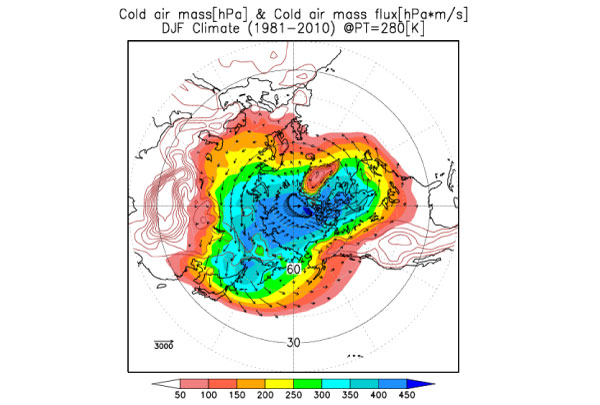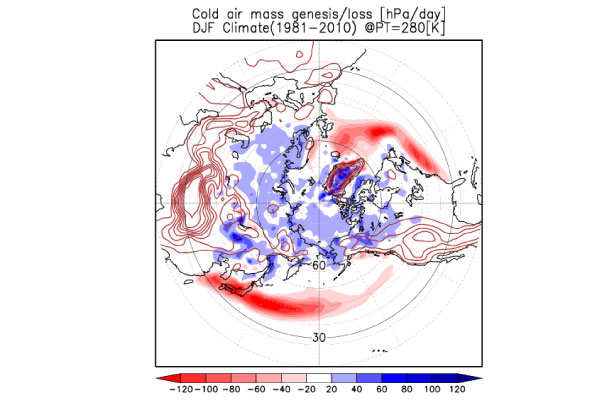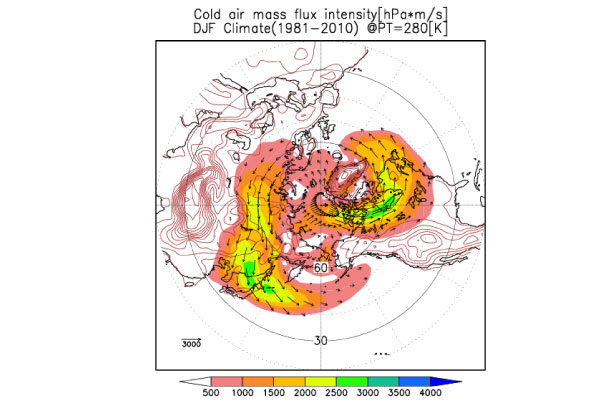Topics 2015.08.19
Two major cold air mass streams in Northern Hemispheric winter

[Recent research topic] Atmospheric Science Laboratory is studying the life cycle of polar cold air mass as an extension of isentropic analysis of the atmospheric general circulation.
The cold air mass is defined below a designated potential temperature. The hemispheric total cold air mass is conserved under adiabatic conditions. The cold air mass is generated (lost) due to diabatic heating (cooling). The threshold potential temperature can be chosen for research objectives. The threshold potential temperature of 280K is appropriate to seeing cold air outbreaks in the northern hemispheric winter.
Cold dome
The coldest air mass with the lowest potential temperature is situated at the bottom of the atmosphere. The upper panel shows that the thickness of the cold air mass almost reaches 500 hPa (about 5000m) at most. Its geographical distribution is deviated from axisymmetry under an influence of ultra-long waves with wave number of three.
The cold air mass is generated over the continent and sea-ice and disappears over the open ocean.
The central panel indicated the diabatic change rate of the cold air mass, where the genesis (loss) is colored in blue (orange). In high latitude, the ground surface becomes extremely cold during winter. The cold air mass is effectively generated due to radiative cooling over the continent and sea-ice. The ocean surface has a large effective heat capacity. The cold air mass is lost due to sensible and latent heating over the ocean.
Two major cold air streams――The East Asian stream and North American stream
Two major cold air streams are found in Northern Hemispheric winter. We call them East Asian stream and North American stream. The former grows up with moving eastward over the northern Eurasia, turns southeastward over Siberia, and disappears over the Pacific Ocean. The latter grows up over the Arctic Ocean, flows southeastward on the eastern side of Rocky mountains, and disappears over the Atlantic Ocean. Near the storm tracks, active extratropical cyclones assist the equatorward displacement of cold air mass and its loss over the warm ocean.
Winter monsoon and cold surges
In Northern hemispheric winter, the life time of the cold air mass associated with large scale motions is estimated at less than 30 days. Charge and discharge of the cold air mass initiate low-frequency variability of weather system in the polar region. The discharge is caused by the cold air outbreaks, so-called cold surge events, which bring extremely cold weather. Those are also the main events of cold waves over Japan.
Link: Atmospheric Science Laboratory
(Prof.Toshiki Iwasaki, Atmospheric Science Laboratory)


